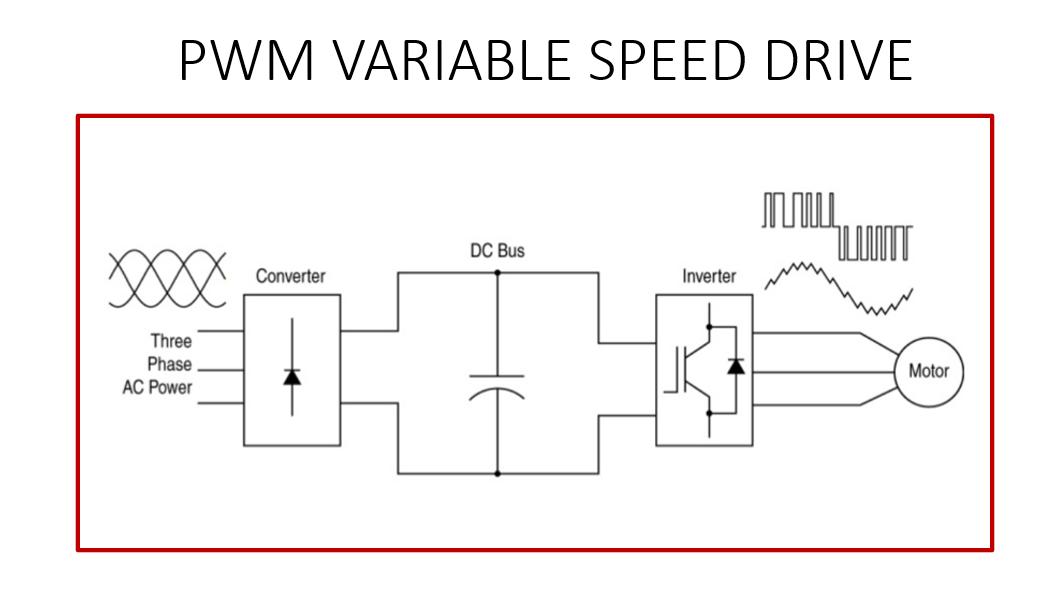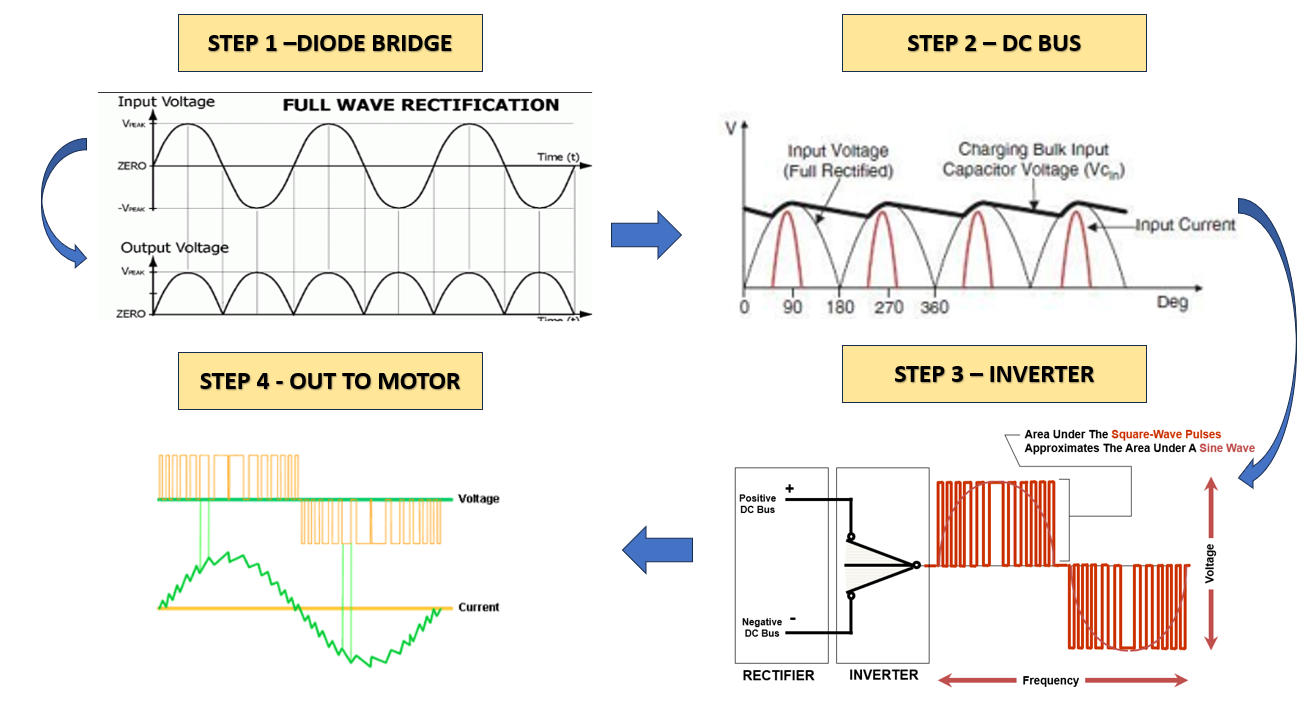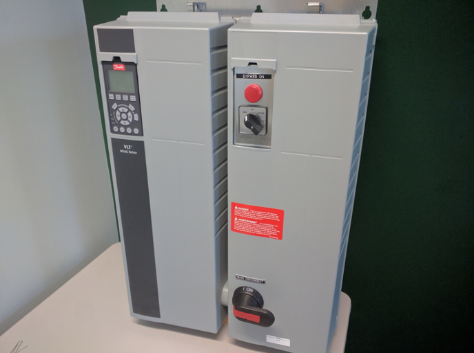 |
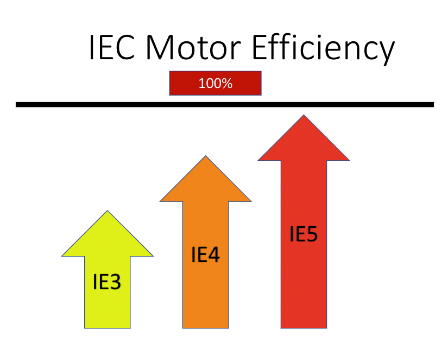 |
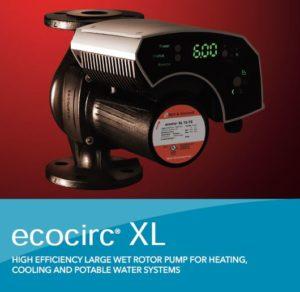 |
|
Danfoss VFD |
Motor Efficiency Terms |
Bell & Gossett ECM Pump |
Variable speed centrifugal pumps in building heating, cooling, and plumbing systems use a couple of technologies to vary the speed of the motor. Today, we outline what these technologies are, how they function, and how they differ. We will look at VFD (Variable Frequency Drives), motor efficiency standard terms from the IEC (International Electrotechnical Commission), and ECM (Electrically Commutated Motors). The goal is to make the reader aware of these basic technologies.
Variable Speed Drives or VFD
A HVAC variable speed drive (VFD) is an electronic device mounted in an enclosure which functions to change the speed that the motor is operating. The most prevalent type of VFD used in HVAC and plumbing is the pulse width modulated (PWM) type. Decades ago, two other early contenders were variable voltage and variable current types. These went by the wayside due to costs and ill effects on other system components. As an example, you may remember the tales of school clocks running backwards.
The representation shown above is from Danfoss. R. L. Deppmann is an HVAC distributor of Danfoss drives. This blog is not meant to be a class in drive construction, but I want to point out the basic operation.
The drive takes the AC power, normally three-phase, and converts it to DC. We “flatten out spikes” so it looks like DC. Then it uses electronic transistors to invert it back to AC. When it changes it back to AC, the electronics change the voltage and phase. Phase is the width of the signal, and the height is the voltage. The variation of voltage and phase will change the speed of the motor.
The drive portion changes the speed of the motor. There are controls in the drive to accept a signal or create a signal telling the drive what speed to operate at. More about that in a later article.
Motor Efficiency and Centrifugal Pumps
Besides the motor nameplate speed and voltage, efficiency is important. Motor efficiency is critical in Federal and State energy codes. The United State Federal energy standards of 1992 and 2007 (EPACT) raised the efficiency requirements of motors used on centrifugal pumps. The Department of Energy continues to review and raise the efficiency standards of motors.
Motor efficiency is specified in standards created by the IEC or International Electrotechnical Commission. Today, most motors over 1 HP are IEC-3 or higher. The IEC-3 motors are what most specifications refer to as Premium Efficiency Motors. The next steps of IEC-4 and IEC-5 move us into motors referred to as PMAC and ECM. Rather than repeat things we presented in the past, please take time to read the following blogs:
- Part 1: Permanent Magnet Motors & Electronically Commutated Motors
- Part 2: Permanent Magnet & Electronically Commutated Motors in Hydronic Systems
- Part 3: The Advantages and Disadvantages of Permanent Magnet Motors
There are three key takeaways from these blogs besides the greater efficiency.
The first is the part load efficiency. HVAC pumps rarely operate at 100% or design capacity. These hydronic and plumbing system pumps will operate most of the season in the 25% to 75% of speed range. That is where the IEC-4 and 5 motors shine.
The second key takeaway is the requirement of a variable frequency drive on a PMAC or IEC-4 motor. These motors MUST have a VFD to operate. The drive must be compatible with the PMAC motor. The specifier should make sure the drive specification matches all types of motors on the project. We will be giving examples of easy-to-select and specify pumping systems in the coming weeks.
The third key takeaway is an ECM pump may or may not be a “smart pump.” ECM by itself identifies a motor that can change speed without an external drive or VFD. It does not mean it can do it without a signal to make the change. A “Smart Pump” will have the ECM motor coupled with controls to operate the pump in the system. Bell and Gossett, who we represent, has examples of this technology.
Next week we will continue to explore the variable speed pump and the type of control signals used to change the speed.

